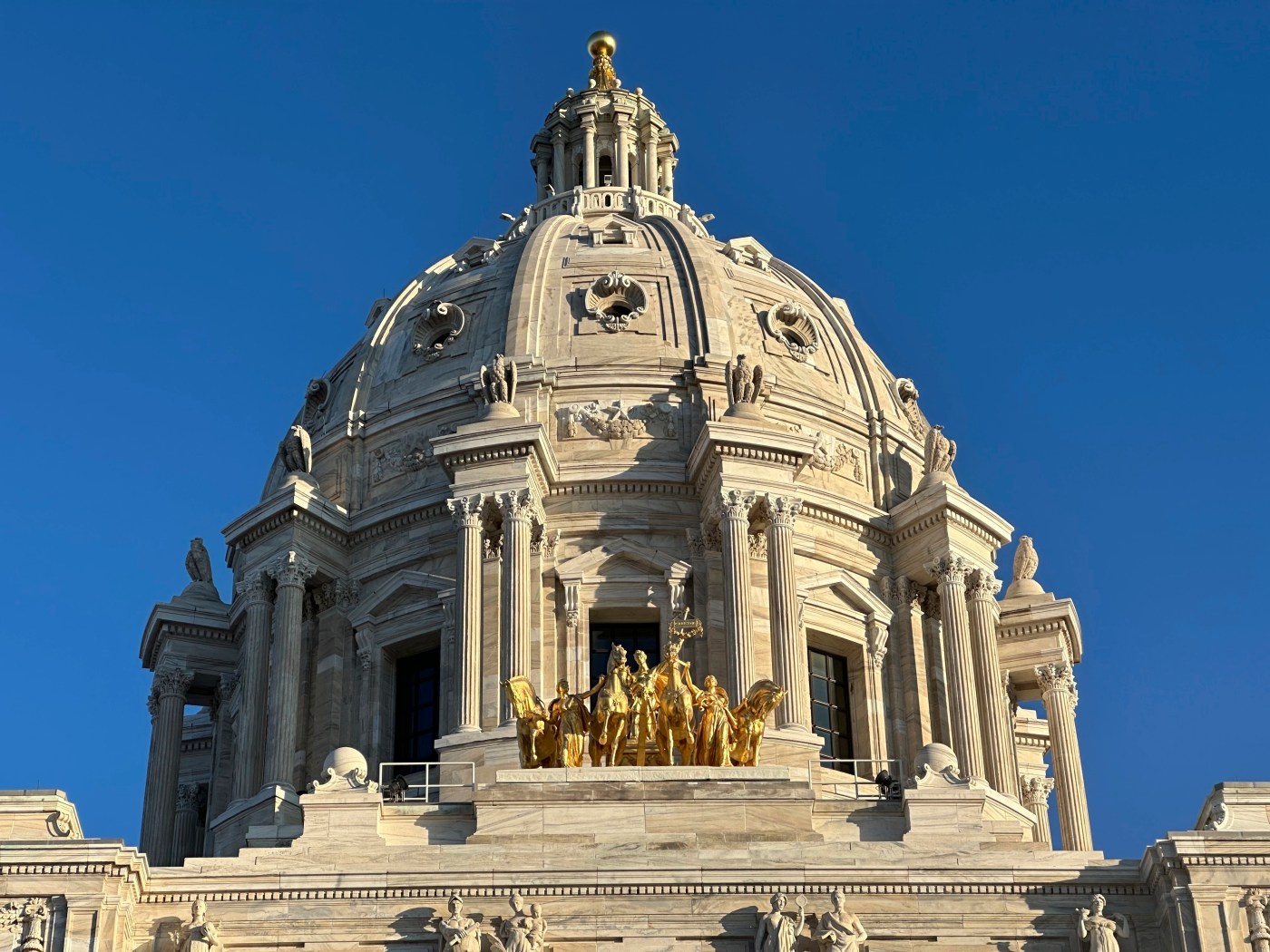
MN lawmakers advance $541M in new spending, including $109M for property forfeiture settlement
Democratic-Farmer-Labor lawmakers are advancing about a half billion dollars in new spending on top of Minnesota’s current two-year budget.
While the Legislature already passed a new $72 billion budget in 2023, this year, lawmakers are making additional tweaks and adding spending.
In an even-numbered year at the Legislature, the biggest order of business for lawmakers is traditionally a public works borrowing bill. But they can also pass what’s known as a supplemental budget, which carries additional spending decisions to fine-tune the running two-year budget.
Gov. Tim Walz.
Last Monday, DFL Gov. Tim Walz pitched a supplemental budget of $226 million that included a $45 million boost to a child tax credit for lower-income families.
But that amount has grown. In an agreement with DFL legislative leaders announced Friday, the sides settled on about $477 million in additional spending for the current two-year cycle, and another $62 million in 2026-2027. Walz, House Speaker Melissa Hortman and Senate Majority Leader Erin Murphy signed off on the proposal.
“Our supplemental budget agreement makes needed short-term investments, builds on the work done last session, and maintains the state’s fiscal stability,” Murphy said in a statement last week.
Fine-tuning details
Sen. Erin P. Murphy, DFL-St. Paul. (Courtesy of the Minnesota Senate)
The House Ways and Means Committee on Monday advanced the supplemental budget goals on a party-line vote with all Republicans opposed.
Those goals will give other committees a framework as they work to fine-tune the details of last year’s $72 billion budget, which used most of a $17.5 billion surplus.
“What you see in front of us is a prioritization of high needs … while also balancing the future of our state budget,” said House Ways and Means Chair Liz Olson, DFL-Duluth.
The supplemental budget aims to leave the state’s $2.9 billion rainy day fund intact — extra padding which should allow the state to keep the budget balanced.
By far the biggest item in the supplemental budget now moving forward is about $109 million for a court related to property forfeitures. Walz’s initial supplemental budget did not include the settlement.
Last year the U.S. Supreme Court unanimously ruled Hennepin County had violated 94-year-old Geraldine Tyler’s Constitutional rights when it seized her Minneapolis condo due to back property taxes, sold it and pocketed the profits.
State law permitted the practice, but in the wake of the Supreme Court decision, counties will have to reimburse property owners in similar circumstances to the tune of about $109 million as part of a class action settlement related to the case. Lawmakers continue to work on a fix to Minnesota’s property forfeiture laws.
Other items
Besides a large chunk of cash for the Tyler settlement, some bigger spending areas in the agreement between DFL leaders and the governor include education, public safety and taxes. Among them:
• K-12 education, $61 million.
• Children and families, $58 million.
• Tax cuts and credits, $58 million.
• Health and human services, $57 million.
• Capital investment $40 million.
• Judiciary, $39 million.
• Public safety, $32 million.
There’s also $16 million for struggling rural emergency medical service providers across the state.
Spending constraints
Minnesota Management and Budget in February projected a $3.7 billion surplus for the state, though budget officials warned too much additional spending could result in shortfalls in the future as the state is currently spending more money than it is taking in.
Lawmakers can approve a maximum of $2.2 billion during this legislative session without risking a deficit in the future. The supplemental budget does not exceed that amount, though minority Republicans have raised concerns about additional spending on top of a record budget that grew government spending by 38% over the last two-year budget.
Rep. Pat Garofalo, R-Farmington.
Rep. Pat Garofalo, R-Farmington, said spending backed by DFLers was ultimately unsustainable and cast doubt on whether a DFL majority would practice restraint on spending in the next budget cycle. He said the state would have to cut spending by about $5 billion to meet a budget goal of around $66 billion in 2026-2027.
During Monday’s Ways and Means hearing, he said the GOP would back shifting resources, but could not get behind this year’s new spending goals.
“The idea that the government of Minnesota doesn’t have enough money and is not spending enough money, and needs to do more is simply not in conjunction with the mathematical reality,” he said.
Related Articles
Proposed ban on bird hatching in Minnesota schools gets amendment following outcry
Joe Soucheray: Reckless car thieves, streetlamp wreckers … we’re tired of this
Dave Thune: We need to support our public-safety people every day
Letters: Why would we think a zoning sledgehammer is the right tool for Minnesota?
Letters: Words and their varied meanings matter in Minnesota’s End of Life debate


